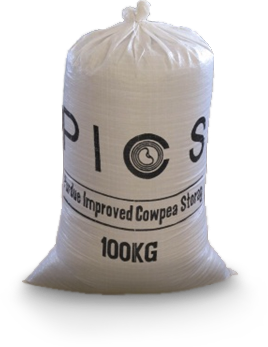


Almost everyone enjoys a steamy cup of coffee on a cold morning or an iced latte on a summer afternoon. Coffee's demand is so high that it is inelastic: shoppers consume it regardless of its price and supply availability. Regarded by many as the world's top coffee producers, Colombian coffee farmers and cooperatives struggle between harvest seasons to satisfy the ceaseless demand.
The humidity in Colombia's Triángulo del Café region and the lack of high-quality storage alternatives there push coffee producers in the area to sell at changing daily prices, affecting not only their finances but the country's coffee supply. To help Colombian coffee producers extend the beans' shelf life and sell at market peak times, Purdue professor Kenneth A. Foster (Agricultural Economics) partnered up with Carlos Parra, Agronomy professor at Universidad de Caldas, to test the efficiency of the - already successful - Purdue Improved Crop Storage (PICS) bags on green coffee beans storage.
PICS are cost-effective hermetic bags that prevent post-harvest losses, minimize the need for pesticides, and stretch the supply availability regardless of seasonality. Created in 1987 to help black-eyed pea (or cowpea) farmers from Cameroon deal with pest insects, the effectiveness of these triple-layer bags has been widely proven to suffocate insects in legume and cereal crops in African and South Asian countries. While the technology has never been used in coffee beans before, its potential impact on Colombian coffee production is tremendous. "The whole coffee community in Manizales is expecting to see the results of this study," explains Carlos Parra.
Natalie Donovan, a food scientist by training and current master student in the Purdue Agricultural Economics department, traveled to Manizales in March 2017 to collect her initial samples. Her food science background makes her an ideal candidate to understand the physicochemical properties of coffee, intertwined with its economics and market elasticity. In this project, Donovan will measure quality characteristics (i.e., moisture content, water activity, and cupping score) and economic variables (i.e., historical price data, seasonality, and price premium) of green coffee beans stored with both 3-layered and 2-layered PICS bags, and traditional bags (control). "Because we are not really worried about insects, we might be able to work with a less expensive system, such as 2-layered PICS bags" explains Donovan.
Claudio Bedoya and Paola Andrea Tabares, two undergraduate students in the Agronomy Engineering department at Universidad de Caldas, are helping Donovan collect and analyze the samples. Native to the region, they have both made this project their graduation thesis. "The biggest limitation of Manizales when it comes to food products shelf-life studies is the high environmental humidity," expressed Bedoya and Tabares. "This is one of the major driving forces for the use of PICS bags in coffee storage."
The project has been well received in the community and has been supported by the Coffee Farmers Cooperative in Manizales, which is responsible for assessing the cupping scores - the value that determines the quality and exportability of the beans. Although there is not yet enough data to show conclusively whether PICS bags will provide a feasible storage solution for green coffee beans or not, the whole team is confident that the system will prove successful and will play a crucial role in future Colombian coffee production.

Natalie Donovan, graduate student in the Purdue Agricultural Economics Department, exploring the Colombian coffee region

Claudio Bedoya and Paola Andrea Tabares, undergraduate students at Universidad de Caldas, collect coffee samples from traditional bags. Purdue PICS bags can be seen in the back.
Last modified: December 4, 2023